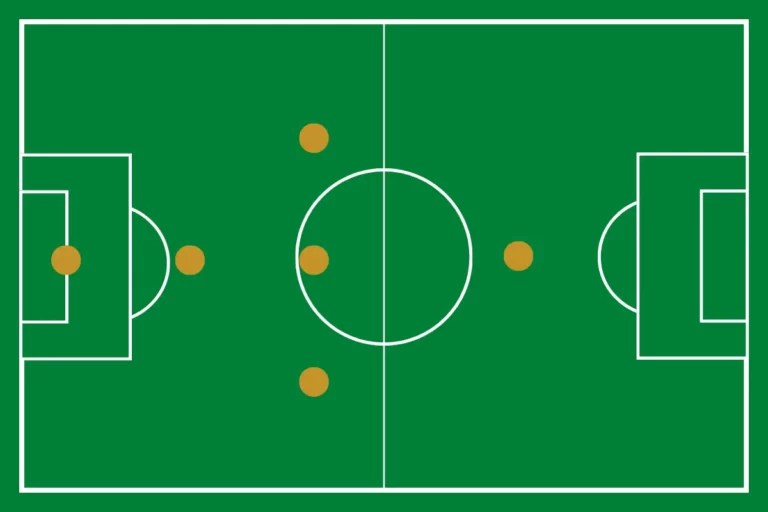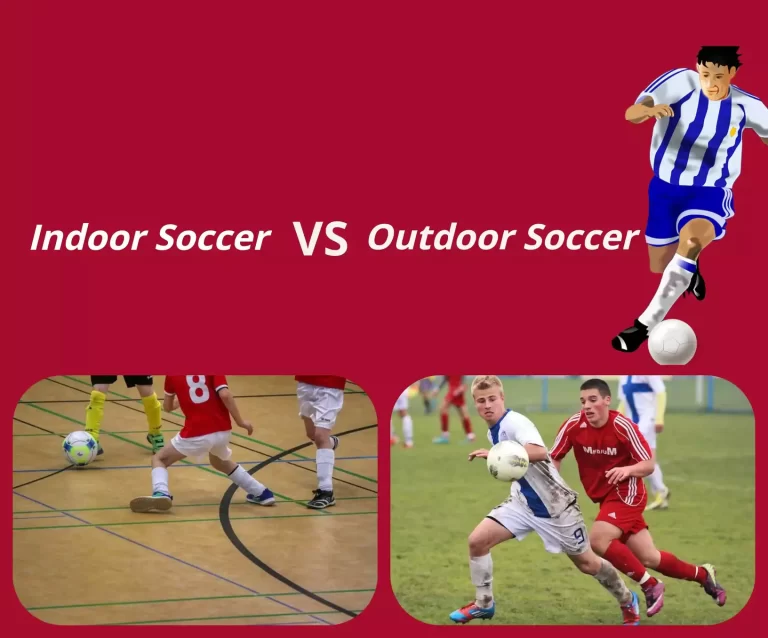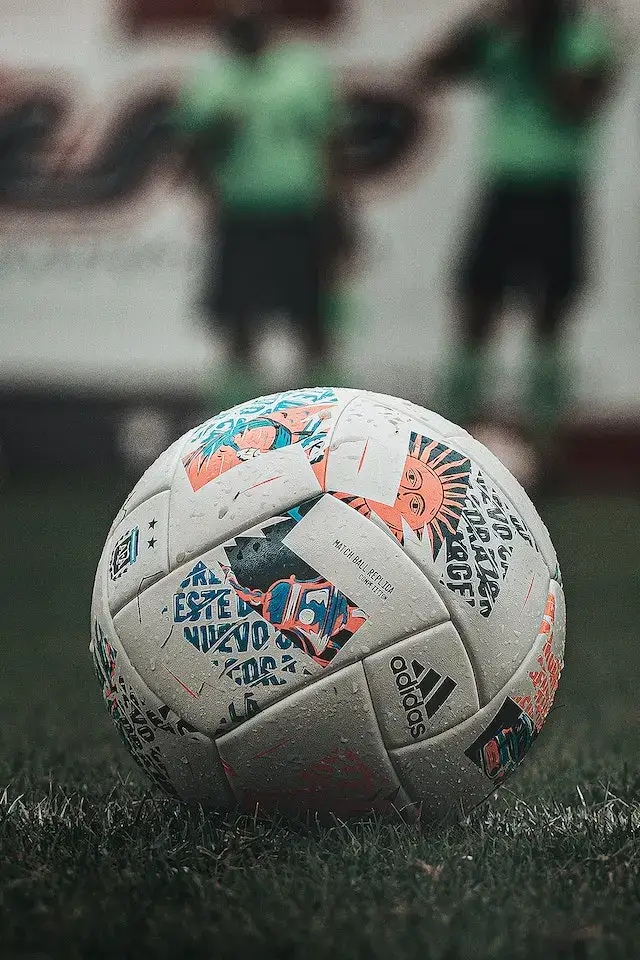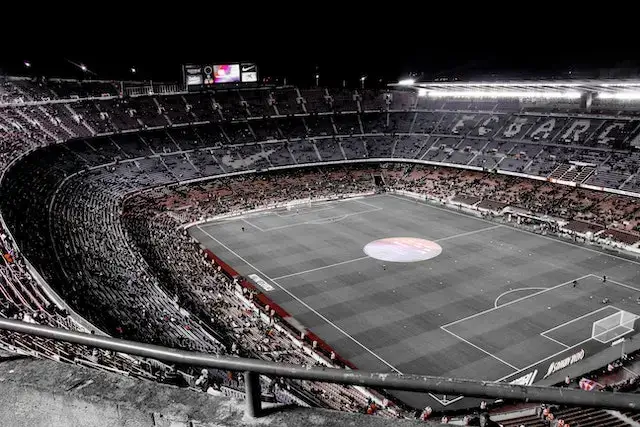Rules of Indoor Soccer
Indoor soccer has been developing and gaining popularity for the last 100 years. As an offshoot of soccer, the rules of indoor soccer are much the same, with adjustments to accommodate for the smaller field size and the fewer players.
To begin with, it must be understood that indoor soccer is still a developing game. It is not recognized by FIFA, nor is it an olympic game. However, there are several internationally acclaimed governing bodies, like the World Minifootball Federation, and the US Soccer Federation. We will be following the professional indoor soccer rules set down by the WMF and some of them may differ slightly from rules by other organisations. These differences are minor and easily adaptable.
We will be going through the basic rules of indoor soccer, like the field setup, teams, players, gear (shoes, ball, etc.), restarts, timeouts, game intervals, substitutions and fouls that are followed in most professional indoor soccer games. Learn more about professional indoor soccer.
So let’s start breaking down the game.
Playing field
The indoor soccer field is a 200 x 85 ft rectangle. Length of the field should be between 190 and 210 ft, and the width between 75 and 90 ft.
The ceiling must be at leas 4m high.
The playing area is walled, with the balls being part of the field.
Field Markings
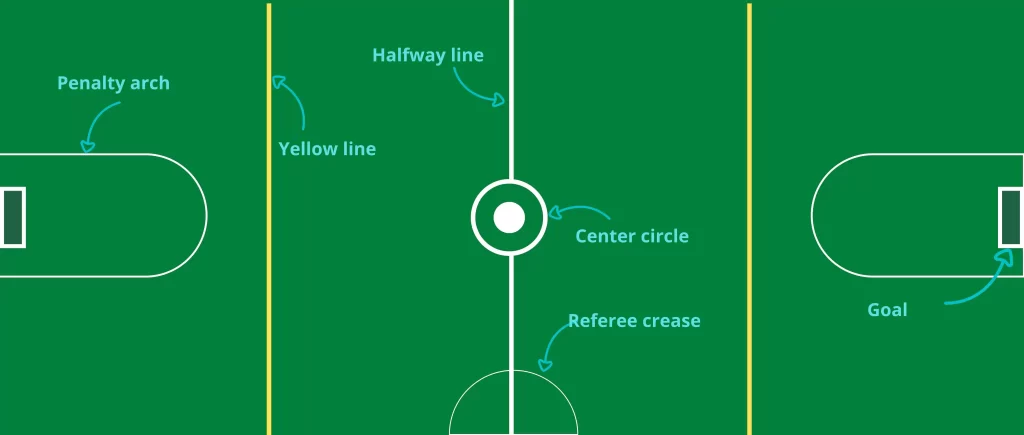
The following lines are marked on the playing surface:
- Touchlines (the longer field lines; must be between 46 and 50 m)
- Goal lines (shorter field lies; must be between 25 and 30 m)
- Halfway line (divides the field in half)
In addition, the following markings are also made on the field:
- Center point – placed in the center of the halfway line. This is where the ball is placed at the start of the game. It is a circle of radius 5m.
- Goal – 4m wide by 2m deep goal at the center of the goal line
- Penalty area – 7m long by 14m wide; it starts from the edges of the goals
- Corner area – 0.5m quarter circle at each corner
Playing surface
The floor is any of these:
- Astro turf (synthetic turf)
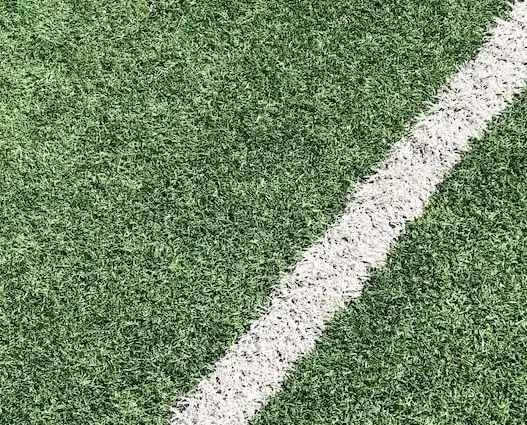
- Hardwood
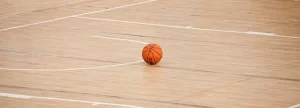
- Ceramic

- Natural
- Combination
Ball
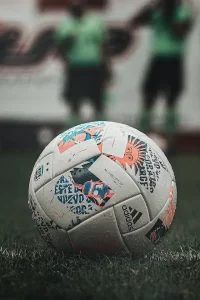
–
According to the WMF rules of indoor soccer, the ball must be between 68 – 70 cm in radius weighing between 410 -450 g.
Players
The number of players must be between 4 and 6.
Substitutions
Unlimited number of substitutions are allowed.
Equipment
In addition to shirts, shorts, and socks, shin guards are compulsory for all players.
Cleats of any kind are prohibited. (This is to prevent injury to the players, as cleats offer little to no traction on the flat surface of an indoor soccer field). Indoor soccer shoes have flat soles with shallow, non marking grip patterns to prevent slipping, and to make sure that the shoes do not damage the playing surface. You can find out more about indoor soccer shoes here.
Duration
The time interval rules of indoor soccer differ from league to league in the US. Most commonly, a match consists of two intervals of 25 minutes or less. The interval is increased in case of penalty kicks until the penalty kick is taken.
Half times must not be more than 10min.
Starting / restarting play
The game starts with a kick off at the beginning of each half and after a goal. The game may also be restarted by any of these
- Free kicks
- Throw-ins
- Corner kicks
- Penalty kicks
Ball out of play
The ball only goes out of play if it touches the ceiling. In that case, the game resumes with a throw-in.
Bouncing off of the walls does not make the ball go out of play.
Extra time
The game may be extended for two 5min intervals
Fouls
Opposing team is awarded free kicks (direct or indirect, depending upon the offence) or penalty kicks in cases of offence.
Free kicks can be awarded for
- Players being careless, or aggressive, or disruptive
- The goalkeeper handling the ball outside the penalty area
A yellow card indicates a caution, a red card indicates a send off.
Conclusion
Since indoor soccer rules are often laid down by the relevant authorities, they tend to differ slightly. The WMF rules of indoor soccer can be read here.
Frequently Asked Questions about the Rules of Indoor Soccer
What is a blue card in indoor soccer?
A blue card is shown when a player commits a minor offence and is temporarily sent off the field, so that their team plays with a player short for the duration of the send-off.
What is boarding in indoor soccer?
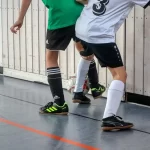
The indoor soccer field is surrounded (boarded) by walls that are considered a part of the field. The ball does not go out of play if it hits or is deliberately bounced against the walls, It does go out of play if it goes over the wall(s).
What is the penalty for offsides in indoor soccer?
There are no offsides in indoor soccer since the walls are part of the playing area.
What is touch line in indoor soccer?
Touchlines are the longer lines bounding the field of play. Please read this part of the article.
What is a goal kick in indoor soccer?
According to the WMF rules for indoor soccer:
A goal kick is awarded when the whole of the ball passes over the goal line, on the
ground or in the air, having last touched a player of the attacking team, and a goal is not
scored.
A goal may be scored directly from a goal kick, but only against the opposing team; if the
ball directly enters the kicker’s goal a corner kick is awarded to the opponents if the ball
left the penalty area.
In indoor soccer, what determines where the penalty kick is taken?
A penalty kick is awarded for direct free kick offences inside the penalty area. Direct free kick offences are
– Players being careless, reckless, or using excessive force
– Players handling the ball (including the goalkeeper handling the ball outside the penalty area)
– Players being aggressive towards the opposing team member(s)
What is the mercy rule in indoor soccer?
The mercy rule varies from game to game according to the governing bodies and/or the decisions of the team authorities before the game. However, the main idea is that the game ends if one of the teams is leading by a significantly huge number (10 or more goals by the end of the first half or even near the end of the second half).
What is the official indoor soccer ball?
The official indoor soccer ball is 68-70 cm in radius, and weighs between 410g and 450g.
Indoor soccer game length
Indoor soccer is played in either 2 intervals of 25 minutes or 4 intervals of 15 minutes.
What is the required zoning for indoor soccer?
Most indoor soccer leagues enforce a rule that the ball must not cross three field lines without being touched by a player. This ensures that tactics that aim to overwhelm the opposing team cannot be used and the game is played with proper strategy and gameplay. This is called zoning or the three lines rule.
What is the difference between an indoor and outdoor soccer ball?
There is no difference between an indoor and an outdoor soccer ball, except that the indoor soccer ball is less inflated in case the game is being played on a hard surface. This is to reduce the bounce of the ball to make it easy for the players to play.
What is the maximum number of players on an indoor soccer team?
The maximum number allowed by the WMF is 8. The average indoor soccer team uses 6 players.
Is indoor soccer a sport?
It is indeed very much a sport:).
The version recognized by FIFA is called Futsal. Indoor soccer, arena soccer, 5-a-side, etc., are all the names it goes by. It is one of the most popular games in the US, Canada, and Mexico. You can read more about indoor soccer here.
Are there offsides in indoor soccer?
No, there is no offside in indoor soccer.


